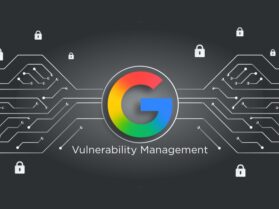Online payment security is of utmost importance in today’s digital-first era. Considering the scenario, where the fraud rates are increasing at an alarming rate, it is the responsibility of business owners to take maximum security measures to keep customer’s data and financial transactions safe. A recent study reveal, 71.1 million people become the victim of cybercrimes yearly.
Further, the internet has completely revolutionized the way we collect customer payments, however, maintaining trust and providing a secure and seamless buying experience should be addressed.
Here’s an in-depth guide wherein we'll delve into 11 best practices to establish a robust mechanism for secure online payment processing.
What’s Payment Security?
Payment security is basically a set of specific rules, regulations, and practices to protect the customer’s personal information, financial transactions, and funds from various cyber threats, including online and offline payment fraud, data breaches, and unauthorized access.
Failing to ensure payment security can lead to legal and financial consequences, making it crucial for your business to implement a secure payment system.
Here are the Best Practices for Online Payment Security
1. Data Encryption (TLS & SSL Protocols)
Data encryption is a fundamental component of payment security It encodes the information so only individuals with the encryption key can decode it, providing end-to-end protection. The two key encryption protocols critical in securing the data are TLS (Transport Layer Security) and SSL (Secure Sockets Layer).
SSL developed in 1995, is an encryption-based internet security protocol that guarantees data privacy, integrity, and authenticity in online communications. Alternatively, TLS, a cryptographic protocol evolved from SSL, aims at maintaining anonymity and data integrity for online communications. TLS is used to secure HTTPS, making it a crucial part of online security.
“HTTPs://” in the padlock icon at the beginning of the URL indicates the website is secured with an SSL certificate. TLS is widely regarded as a more advanced and secure version of SSL, providing additional layers of security and reliability to your online communication.
2. Abide by PCI-DSS Compliance
The Payment Card Industry Data Security Standards (PCI-DSS) were established in the year 2004 and are policies established by the PCI Security Standards Council to govern sensitive cardholder data for e-commerce websites and online payment systems. To be PCI-DSS compliant, websites and payment systems must adhere to specific appeals:
- Maintain a secure network for processing payments.
- Using robust firewalls to protect against security threats.
- Avoid using default credentials.
- Allow customers to change their credentials when necessary.
- Encrypt all data during transmission.
- Protect the entire cardholder data.
- Regularly scan and test for the vulnerabilities
Maintaining PCI-DSS compliance is crucial for securing online payments and protecting customer data from potential breaches.
3. Employing 3D Secure
3D Secure is a protocol for adding an extra layer of security for credit and debit card transactions. This mechanism maintains payment security in e-commerce by verifying a customer's identity. The crucial security measures help prevent unauthorized card usage and include methods such as biometric scans or PIN code entry.
The benefits of 3D Secure include a reduced risk of online payment fraud, enhanced protection of customer data, and increased customer confidence in the security of online transactions.
4. Choose the Right Platform and Payment Gateway
Selecting the right platform and payment gateway is one of the critical aspects of online payment security. Randomly accepting payments through gateways isn’t a good sign. When accepting online payments, protecting your gateways should be on the top of your priority list, as you handle the sensitive financial data of customers.
Make sure the payment gateway you choose abides by all the security principles and is trusted. Among the many available, investing in a secure payment system is worth it in the long run, as it can reduce the risk of cyber threats and attacks, certainly, saving your business from the trouble and potential financial losses.
By investing in a secure payment system, you can reduce the risk of cyber threats, ultimately saving your business from potential financial losses. According to Cybersecurity Ventures, the global annual cost of Cybercrime is anticipated to reach $8 million by 2023.
5. Keeping the Operating System Updated
To avoid the risk of vulnerabilities and data breaches, keeping your operating systems up to date is vital. Proactive maintenance is essential to stay ahead of potential cyber threats. Regularly updating your systems and software is a key security measure that can help safeguard your online payment process and enhance your overall business. Lastly, make sure to check the versions of your operating systems regularly.
6. Payment Tokenization
Tokenization, basically a security technique,where a 16-digit card number is replaced with a unique digital identifier known as a 'token.' This fortifies the security of the transactions by allowing payment gateways to securely access cardholder data without storing the card number.
In case a data breach occurs, and the tokens are stolen, it’s a challenge to reverse the ticket to obtain the original card number.
Tokenization helps e-commerce websites improve security by removing the need to store credit card data and reducing the risk of security breaches.
7. Two-Factor Authentication
One of the best security practices for online payment security is two-factor authentication (2FA). It adds more security to online transactions. This way, users need to verify their identity before accessing a website or making a transaction. The two-factor authentication process keeps you away from hackers and refines security by ensuring that only authorized users can complete the transaction process.
In the digital-first world, 2FA has become one of the strong and standard methods for authentication offering a smooth and secure payment by requiring users to enter only information they possess, such as an OTP or PIN code.
8. Review the Transaction Details
The highest risk of cyber threats lies in online financial transactions. They may carry forward risks, mainly when not involved. Businesses can mitigate the risk of unauthorized payments by verifying user details, including CVV, billing address, phone number, and email ID. Verifying the details of the transactions is a safe step to avoid future risks.
9. Fraud Prevention and Monitoring Systems
With the incorporation of mandatory security protocols, most e-commerce websites and payment gateways employ fraud prevention and monitoring systems. These systems use robust technologies such as big data analytics and machine learning to detect and prevent suspicious transactions. Furthermore, these systems analyze customer data to distinguish between every day and sceptical transactions precisely.
10. Educate Employees on Security Measures
It is better to make your team aware of the online payment security measures. They should be able to identify the potential threats and take appropriate action thereafter. The ideal way to do this is, by conducting training sessions and seminars to ensure your staff is well-acquainted with the data protection guidelines, protocols, and the necessary security measures to incorporate.
11. Make Customers Aware of the Security practices
Customers are above everything else! Once you have implemented security measures, you must communicate them to your customers. Let them know about the security practices in place, such as two-factor authentication or using a reliable payment gateway that complies with PCI standards. Providing this information builds customer trust and confidence in the safety of their transactions on your website.
Key Points to Remember Before Making an Online Payment:
Online payments have become the new normal, with the world going digital. However, it’s essential to keep a few things in mind for further peace of mind.
- Never share your online card passwords with anyone.
- Avoid writing simple passwords; use a password generator
- Dispute suspicious charges on your card or accounts through a chargeback request, asserting your legal right to resolution.
Wrapping it Up
When it comes to online payments, security is of utmost importance. Finances are your greatest assets, thus ensuring online payment security is critical for running a successful digital business and taking it to the next level.
By following the best practices and maintaining robust security measures, you can provide your customers with a safe and reliable online payment experience. Good luck with making safe and secure online transactions.
Read More:





